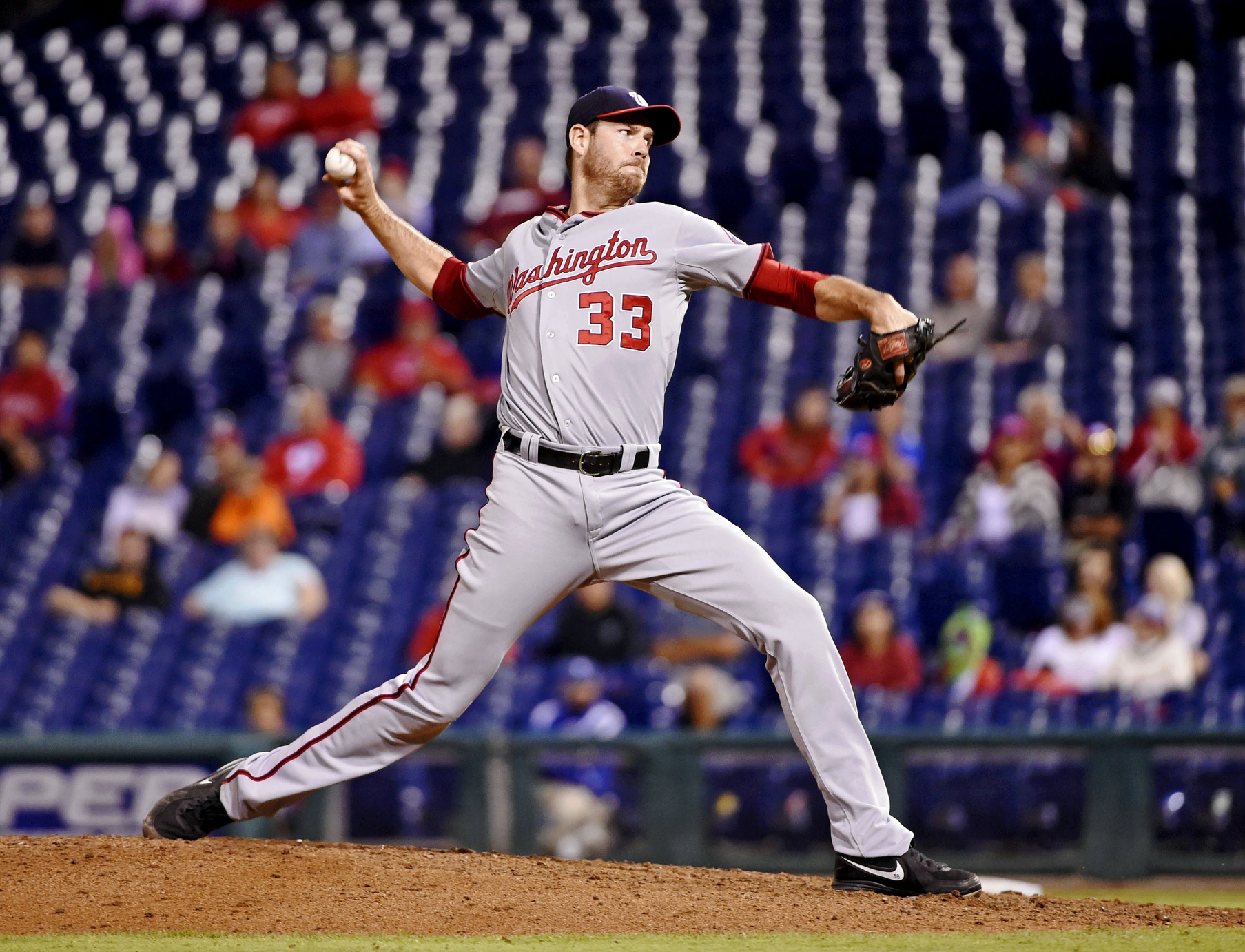Doug Fister
Position: Tall RHP
2015 Stats: 103 IP, 14.0 K%, 5.4 BB%, -1.4 WARP, 4.19 ERA, 6.12 DRA
Why He Fits: I hate Pitching Coach Magic. Quarterbacks and head coaches always get too much credit and too much blame in the NFL; closers and pitching coaches are MLB’s answer to that phenomenon. While a good pitching coach is a valuable resource for any organization, the degree to which pitchers’ successes and failures are so often ascribed to working with very well- or poorly-regarded pitching coaches is just laughable. Johnny Sain, Ray Miller, Leo Mazzone, Dave Duncan, Don Cooper, and Ray Searage spring immediately to mind, but the number of pitching coaches around whom a downright silly cult of personality has formed is much longer than that. Along with Searage, the current flavor of the week is probably Cubs pitching coach Chris Bosio.
I mention this because I’m going to make a fairly thin case today for Doug Fister as a viable free-agent pitching target for the Cubs. I do think he’s a good candidate, but I won’t be spending inordinate time comparing his career arc to that of Jason Hammel (another very tall right-handed swingman, and one with whom the Cubs and Bosio have enjoyed great success) or invoking Bosio’s name at every turn. Chris Bosio is a good coach, and that’s a nice asset to have on hand. If Fister is going to help a team, though, he’s going to do so because (under good tutelage or bad) he works hard, makes serious adjustments, and discovers (or rediscovers) something he has fundamentally lost over the last two seasons. If he does succeed in making the needed changes and ends up helping someone (be it the Cubs, or another team), let’s resist the temptation to bathe his hard work only in the reflected glory of some pitching guru.
Fister fell apart in 2015. It appeared as though he pitched through a forearm issue early in the season (it turned out to be a flexor strain; he missed five weeks), but even after returning, he never looked good. Remember, Fister was never a hard thrower. During his sometimes dominant tenure with the Tigers, he typically averaged 89 miles per hour with his fastball. He was more notable for excellent control, the ability to work the edges of the zone, and consistently strong ground-ball rates. In 2014 (his first season in Washington), the fastball lost perhaps a mile per hour, and while his surface-level numbers remained impressive, that loss of electricity showed up: he fanned only 14.8 percent of opposing hitters that season, his lowest rate since 2010.
Both problems got exponentially worse in 2015. Again, chalk some of this up to injury issues, but Fister threw 86 as often as he threw anything harder than that, and his strikeout rate fell again. He did whiff 15 of 71 batters faced in 10 late-season relief outings, but the recovery wasn’t enough to leave anyone feeling terribly encouraged. Only two pitchers topped 100 innings pitched last season and posted worse DRAs than Fister’s 6.12: Michael Lorenzen and Jeremy Guthrie.
So where is the cause for optimism here? Why pursue such an obviously broken pitcher? It’s all speculation—the aggressive player of the market’s kind, not the irresponsible pundit’s kind. Fister has every key marker of a good buy-low candidate:
- He established his ability to succeed, and succeed in an unorthodox way, for years.
- He had a disastrous most recent season, and his failure came neatly packaged, narratively, such that many other potential suitors might convince themselves the derailment is more “real,” and thus more permanent, than it is (or might be).
- As a long-time user of the splitter, he has a pitch we know might have been disproportionately impacted by a flexor or elbow issue. Now, that might also increase the risk of injury going forward, but it provides some hope that, if the problem really is behind him, he can recover his former form more easily than we might think.
Take particular note of item two. I think it’s a key factor. This is why, in my opinion, Fister’s hideous 2015 is as much a reason to pursue him as to avoid him. It’s very likely that some significant portion of his negative progress over the last year is overblown, and the particular way he failed might mask the chance for a bounceback.
Signing Fister to be a penciled-in full-time starter for a contender would be risky. Paying any significant sum to do so would be insane. Fortunately, in this market, it’s unlikely that it will take either gesture to land Fister. He fits as the low-risk, high-reward proposition that fills out the back of the Cubs’ pitching roster for 2016.
Why it Won’t Work: Guys in Fister’s position hardly ever seek out teams in the Cubs’ position. There will be a handful of teams interested in Fister this winter, at some level, and if he’s looking to prove that 2015 was a fluke and get paid real money next winter, he’s likely to choose the team that offers him the clearest and most secure path to a regular rotation spot. The Cubs won’t be able to guarantee him that, and attempting to make up the gap in perceived opportunity by paying him more would somewhat defeat the purpose of chasing a pitcher at the nadir of his value.
Alternatives: Let’s not draw false equivalencies between Fister and higher-profile pitching targets. Guys in his tier, with similar expected costs and upside, and with potential utility in either the rotation or the bullpen, include: Chad Billingsley, Trevor Cahill, Brandon Morrow, and Yusmeiro Petit.
Lead photo courtesy of Eric Hartline-USA TODAY Sports
